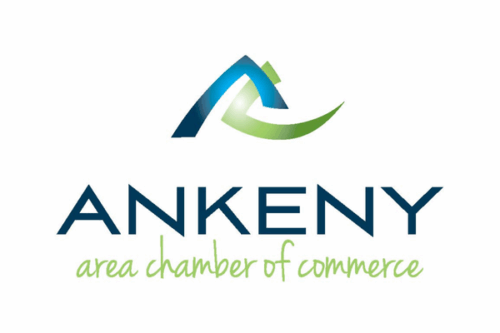You don’t have much of an organization without your members. Although growth isn’t the only nonprofit KPI or focus of a good member-based professional organization, it is certainly an important factor. Thus, you’re going to need a member acquisition strategy.
So just how do you attract people to your association, chamber, or nonprofit? By understanding what a member acquisition strategy is, how it works, and the best ways to grow, which is what this guide is all about. Let’s take a look.
What is a member acquisition strategy?
In a nutshell, a member acquisition strategy is a plan to get more people to join your organization. It involves selling your benefits and perks as a meaningful contribution to their lives or goals so that they will exchange those benefits for money. This may come in the form of nonprofit donations or membership dues, for example.
An acquisition strategy is not simply a loose goal for getting people on board. It is a highly detailed, multi-pronged plan for how you will encourage signups through education, communication, and data analysis. That’s why your strategy is so important.
Why are member acquisition strategies important?
The short answer to why acquisition matters is that you must have members if you want your organization to survive. Otherwise, no one is paying to keep the lights on.
The long answer is that such a strategy brings many benefits other than financial. These include:
- A detailed plan that will help you make smart hiring decisions
- Guidelines for how to run your events, online presence, and outreach efforts
- Enhanced credibility stemming from the above
- A better grasp of the budget, be it monthly, quarterly, annual, or long-term
- An understanding of what you need to offer your members so that you can keep them happy (i.e. member retention)
Speaking of retention …
Member acquisition vs member retention
On a final note, member acquisition and member retention are not the same thing. Retention means keeping hold of people you have already brought on board. Retention rates are calculated by looking at how many people stayed with you from the beginning to the end of a certain period (such as a calendar year). Acquisition is how many people come on board in the first place.
You cannot expect to keep hold of every member who comes on board. Many join for a specific but short-term reason. For instance, there’s been a natural disaster to which they want to donate, or they are changing careers and need a temporary boost from a professional organization. However, it’s pretty much guaranteed that your retention rates will be less than 100%.
Thus, in a growing organization, your acquisition rates will need to make up for the lost members. That’s why a good strategy matters so much.
Before you start new strategies
Now, before you jump into your member acquisition plan, it’s important to lay a good foundation. Otherwise, you may find yourself following a strategy that doesn’t actually move the needle. Here are a few FYIs for the planning stages.
Know your ideal member (target audience)
Understanding your target audience and creating a picture of your ideal member is critical to effective member acquisition. If you don’t know whom you want to bring on board, then you won’t know how to attract them.
To figure this out, many organizations create one or several profiles of their ideal members. They ask questions such as:
- Where do they live?
- What do they do for a living?
- How old are they?
- Are there other important sociodemographic characteristics?
- What do they care about?
- What are their pain points?
Answering these questions will help you understand who you’re gearing your messaging towards. It will also help to ask yourself how being a part of your organization will help them in the long-term. What can you do to ensure that once the immediate pain point has been addressed or the need has been met, they will stay with you?
Make sure your purpose is clear
Before you can begin to put granular member acquisition strategies in place, you need an easily understandable purpose. For instance, let’s say you help low-income, single mothers find childcare services in your area. To clarify your purpose, you must again ask and answer questions such as:
- Whom do you help?
- What’s the income threshold, if there is one?
- What kinds of services do you help find or coordinate?
- How long does your assistance last?
- What benefits will members get?
Remember, in the case of a nonprofit, your members usually aren’t the people you’re serving. So while the single mothers are being helped, you need to create benefits for the people who donate. Those can include feel-good stories, attending an annual banquet, or putting volunteering on their resume.
For a professional organization or chamber, the benefits are usually much more straightforward: classes, workshops, gated content, events, and so forth.
Interview current members
Another step to take before embarking on a member acquisition plan is to interview current members. Wherever possible, your ideal member profile should come from real life: a person your organization has actually helped in the past or present.
It’s helpful to know what makes people happy, of course, but it’s also useful to find out what they’re less thrilled about. If you can manage to snag exit interviews with folks who are leaving, so much the better. Either way, set up regular interviews so you don’t risk getting out of touch.
Set promo calendar
Aligning your member acquisition strategy with seasons, celebrations, and preset activities through your nonprofit is a good idea. That way, your promo calendar is already there to help direct your strategy from the get-go.
10 member acquisition strategies
Once you’ve identified your purpose and ideal member, taken stock of what current members think, and set your promo calendar, it’s time to put your acquisition strategy in place. Here are 10 steps that will help you do just that.
Strategy 1: Build an email list
Emails are worth their weight in gold. (Metaphorical gold, at least, since an email address doesn’t actually weigh anything.) The most important thing about an email address is that it offers you unfettered access to your members or donors.
Why is this so important? Because you may or may not be able to reach them on social media, depending on the whims of whatever algorithm is at work. Your website is a great place for them to gather information, but you cannot reach out to them through it. Direct mail does work, but it’s a slower form of communication. The only way you can get in touch with people directly and digitally is email (or in some cases, SMS).
Now, it’s not true that if you build it, they will come. Simply by starting a list, you do not guarantee an uptick in membership. However, as you add each new member, you add a way to keep in touch with them, a thread between them and you. The following strategies all in some way interconnect with email, so do this first.
Setting up an email list is pretty simple. Choose an online message service or simply build your own database, assuming you have the money and know-how to do so. Then as emails come in, add them to your list. You can choose to send newsletters or not, but you must start building the list itself now.
Strategy 2: Create an online presence
Once you’ve got your email list in place, start building your online presence, if you haven’t already. Build a website and start a social media channel or two. Whenever you set up an online outlet, make sure there are options for people to sign up to your list: newsletter signups on your site, then link to those signups from social media.
The next step in member acquisition is to create content with which people will want to engage. This can take an almost limitless number of forms, such as:
- Blog posts
- Articles and whitepapers
- Social media posts
- Video marketing
- Podcasts
- eBooks
- Interviews
- Infographics
- Listicles
- Photograph galleries
- Testimonials
- Webcasts and webinars
- Interactive content
- Free online training
- Content libraries
… and more. The type of content is less important than whether or not it has real value to potential members (and current members). If it is useful, then people will want to stick around and use it, and will even be willing to pay for access to it or donate to keep it going.
Strategy 3: Understand SEO best practices
SEO stands for search engine optimization and is pretty much what it sounds like: optimizing your content to give it the best chance of being pulled up in search. Today’s SEO strategies aren’t as obvious as they used to be, and you can get penalized for trying to game the system or even behaving like a bad actor unintentionally.
It helps to do your research or use a content creator who can help you. But the main takeaway here is that your content should be high-quality, well-researched, and intuitively structured for human readers.
You should also use clear metadata to tell web crawlers what your content is about. Make sure the metadata is genuinely tied to the content, because trying to fake out the bots will result in penalties or even de-indexing (getting your site removed from search results). Above all, be true to your topic and your cause.
Strategy 4: Build relationships and seek input
Relationships matter. A lot. Creating strong bonds between your organization and the people you serve is the best way to build a robustly positive reputation, encourage word-of-mouth signups, and weather the occasional PR storm that will arise if you’re around long enough.
There are many ways to build relationships, including guest spots on podcasts, speaking engagements, thought leadership articles on other blogs or websites, and going to networking events. Any time you can help someone else (e.g. by giving them a free piece of content that also highlights your expertise), you are both building relationships and getting free marketing.
As you move forward with your member acquisition, get input wherever you can. This will help you realign your strategy if one approach goes off the rails. Asking people what upsets them and makes them happy is also a great way to build trust, because they feel as though their opinion matters.
Strategy 5: Create signup bonuses
Bonuses also encourage membership signups. Offering discounts, free courses, professional education, or download bundles are all appealing to prospects.
Strategy 6: Offer free trials
One of the main sticking points with member acquisition is that people are wary of spending money. Even reasonable membership fees are off-putting given tight budgets and booming inflation.
Luckily, you can fix this by offering free trials. This is a powerful member engagement strategy because it allows people to try your services without risk. Because they usually have to give a credit card, this also works for you. They have already overcome the part of the process that involves the biggest resistance, while feeling confident that they can get out of it if needed.
Strategy 7: Host events
Events are a great way to bring in members. Sought-after speakers and musicians are a huge draw, and if the only way to see them is to sign up, that can be effective for member acquisition. Offering discounts on event tickets is a time-honored member acquisition strategy, helping people save money.
Strategy 8: Test and validate
Each time you use a new strategy, test it first. Send emails out to smaller groups and assess their effectiveness. Show new websites to test groups. Make sure that signup sites work as intended. That way you don’t lose people without meaning to.
Strategy 9: Use data to drive decisions
It is tempting when building a member acquisition strategy to add items to the list on a “that looks pretty good” basis. However, this is a good way to lose money. Instead, use data.
The best place to find data on what works for your organization is from your own organization. Which campaigns have been successful? Which events drew the largest attendance? In what benefits are people most interested? Using this information, build new strategies that capitalize on what has already worked.
If you’re too new for this strategy to be of much use, research competitors to see what they do. As time goes on, you can adjust.
Strategy 10: Make signups easy and painless
In order to further smooth your member acquisition strategy, make sure signups are always easy and painless. If people have to work hard to donate to your cause or join your organization, chances are good they’ll look elsewhere … and there is always somewhere else to look, so you don’t want to take this risk.
To accomplish this, make sure signups are obvious everywhere on your site. Link to them clearly in social media bios and, if you can, put links in your guest content as well. Keep the information you request to only what you need. Perhaps it’s tempting to gather every last piece of contact information, but that can also be a turnoff.
If you can, tie signups to bonuses. Discounts, free tickets, gated content or courses, or anything else for which they have to “pay” with an email are great incentives for signing up. Also, make sure to distinguish between simply signing up for an email list and actually joining on a member or donor basis. If you’re going to ask for a credit card, the benefits need to be very obvious!
Key takeaways
Here’s a quick rundown of the key takeaways in this article, the better to hit the ground running with your acquisition efforts:
- A member acquisition strategy is a game plan that helps you convince people that your benefits are worthwhile so that they will sign up.
- Member acquisition means bringing people on board, while member retention means keeping them there. Acquisition must make up for the fact that retention will always be less than 100%.
- It’s critical to develop an ideal member profile so you know toward whom your strategy is geared.
- Maintaining a solid digital presence – through email, online spaces, and SEO – is a foundational step in an all-around great member acquisition strategy.
- Make joining your nonprofit, chamber, or professional association a no-brainer through free trials, signup bonuses, event discounts, and easy signups.
- Using a simplified online member portal makes signups easy and painless. It also encourages a sense of community, which will increase your chances of retaining members over the long haul.
We are here to help
If you’re ready to get your member acquisition strategy going, then the first thing you need to do is figure out where your online home base will be. It’s important to give people a place where they can check in on their benefits, keep up to date on community events, and read the news of the day.
MemberClicks is here to help you do just that. Our software helps you streamline processes, save money, reduce staff time, and please your members all at once. Whether you’re a chamber, nonprofit, professional association, or any other type of organization, we welcome you to our platform. All you have to do is get in touch to learn more.
















